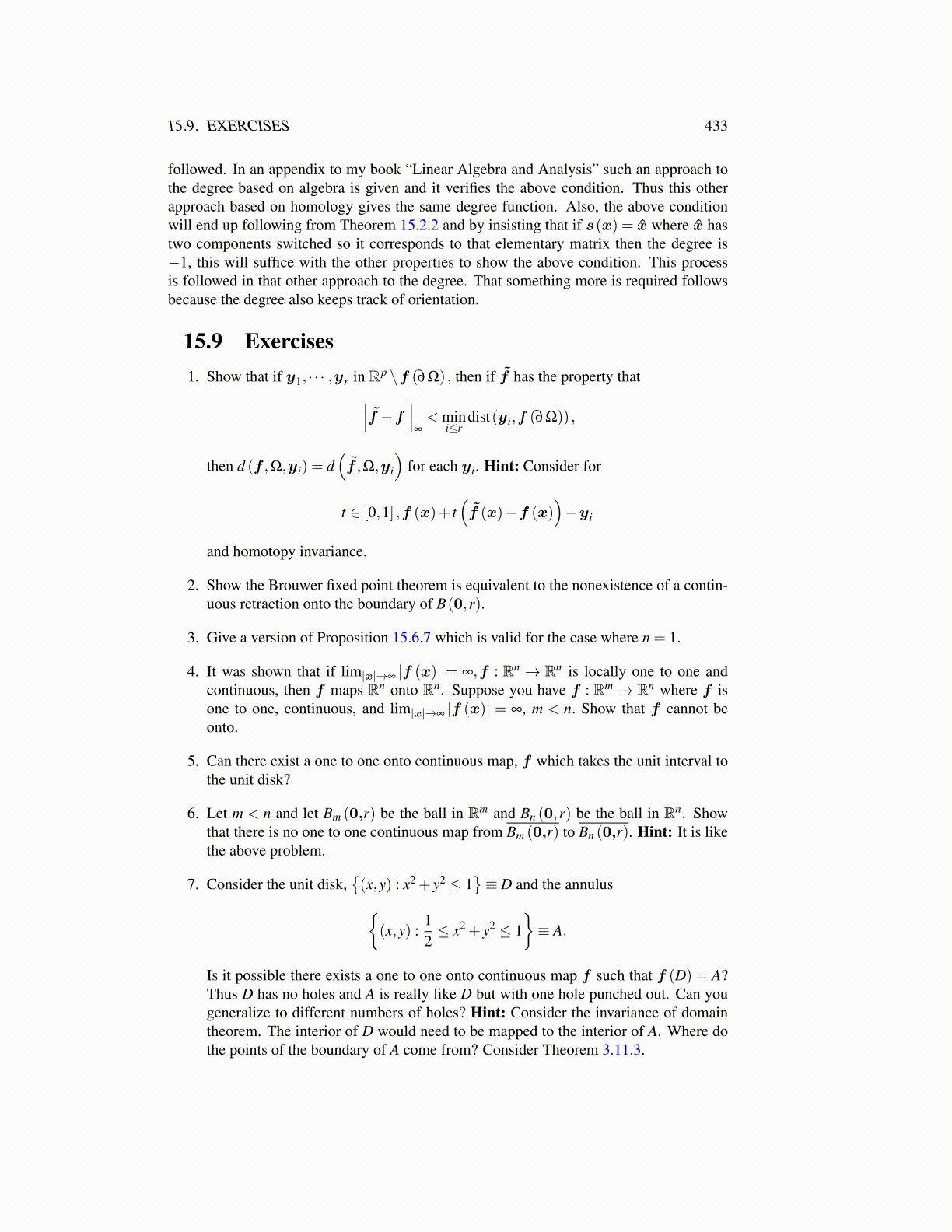
15.9. EXERCISES 433
followed. In an appendix to my book “Linear Algebra and Analysis” such an approach tothe degree based on algebra is given and it verifies the above condition. Thus this otherapproach based on homology gives the same degree function. Also, the above conditionwill end up following from Theorem 15.2.2 and by insisting that if s(x) = x̂ where x̂ hastwo components switched so it corresponds to that elementary matrix then the degree is−1, this will suffice with the other properties to show the above condition. This processis followed in that other approach to the degree. That something more is required followsbecause the degree also keeps track of orientation.
15.9 Exercises1. Show that if y1, · · · ,yr in Rp \f (∂Ω) , then if f̃ has the property that∥∥∥f̃ −f∥∥∥
∞
< mini≤r
dist(yi,f (∂Ω)) ,
then d (f ,Ω,yi) = d(f̃ ,Ω,yi
)for each yi. Hint: Consider for
t ∈ [0,1] ,f (x)+ t(f̃ (x)−f (x)
)−yi
and homotopy invariance.
2. Show the Brouwer fixed point theorem is equivalent to the nonexistence of a contin-uous retraction onto the boundary of B(0,r).
3. Give a version of Proposition 15.6.7 which is valid for the case where n = 1.
4. It was shown that if lim|x|→∞ |f (x)| = ∞,f : Rn → Rn is locally one to one andcontinuous, then f maps Rn onto Rn. Suppose you have f : Rm → Rn where f isone to one, continuous, and lim|x|→∞ |f (x)| = ∞, m < n. Show that f cannot beonto.
5. Can there exist a one to one onto continuous map, f which takes the unit interval tothe unit disk?
6. Let m < n and let Bm (0,r) be the ball in Rm and Bn (0,r) be the ball in Rn. Showthat there is no one to one continuous map from Bm (0,r) to Bn (0,r). Hint: It is likethe above problem.
7. Consider the unit disk,{(x,y) : x2 + y2 ≤ 1
}≡ D and the annulus{
(x,y) :12≤ x2 + y2 ≤ 1
}≡ A.
Is it possible there exists a one to one onto continuous map f such that f (D) = A?Thus D has no holes and A is really like D but with one hole punched out. Can yougeneralize to different numbers of holes? Hint: Consider the invariance of domaintheorem. The interior of D would need to be mapped to the interior of A. Where dothe points of the boundary of A come from? Consider Theorem 3.11.3.